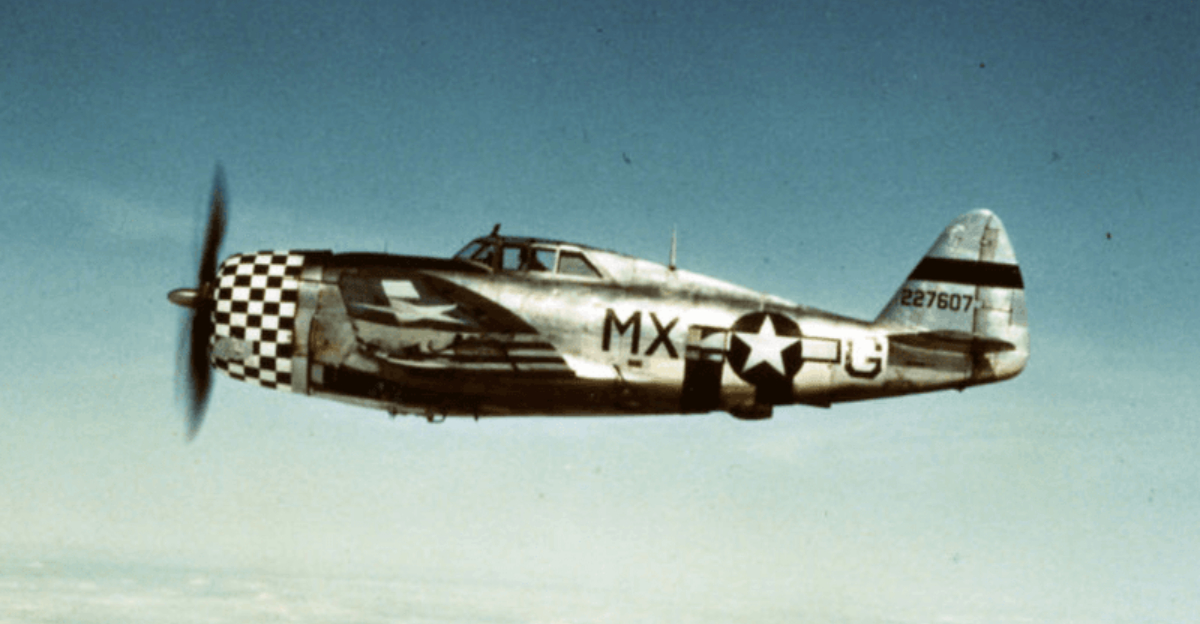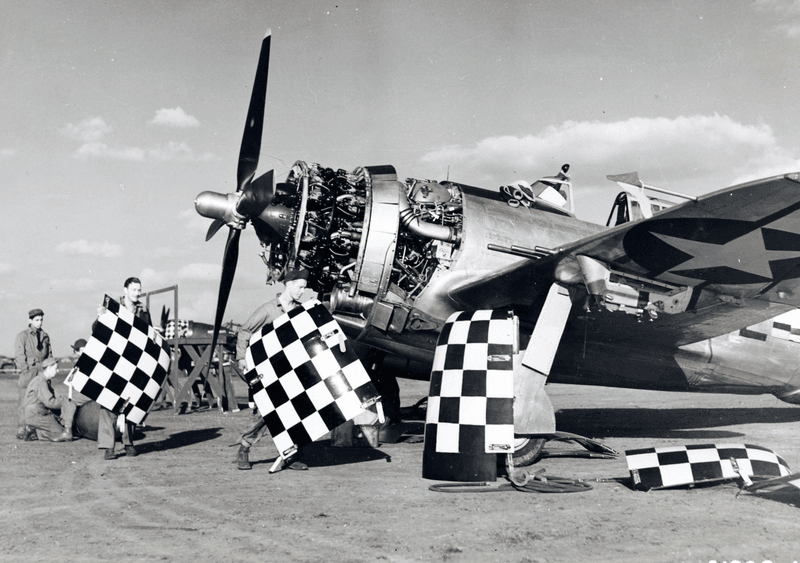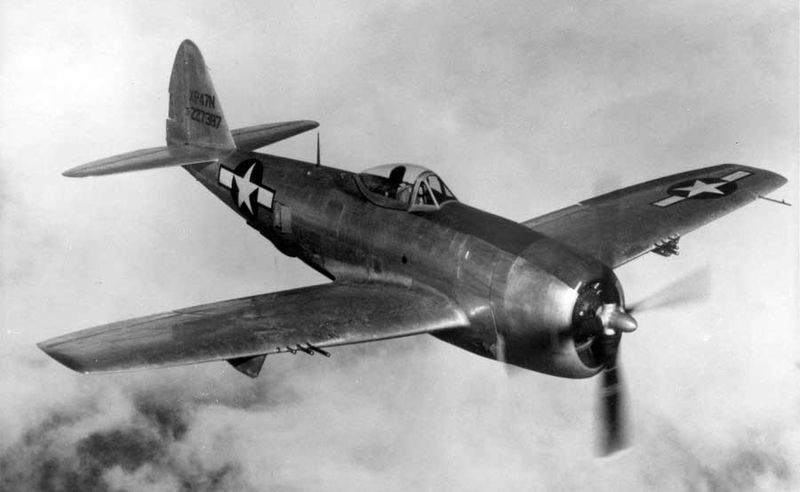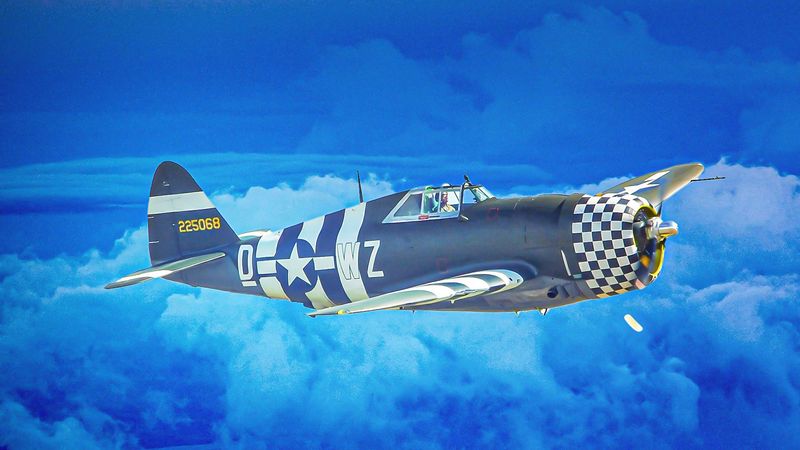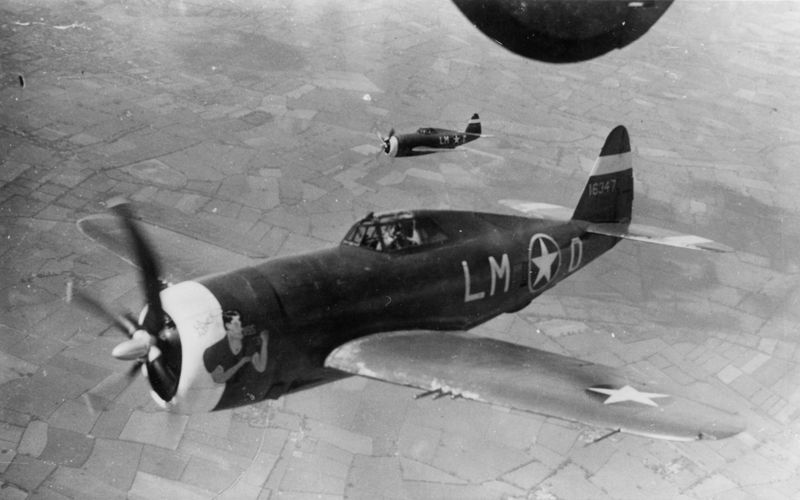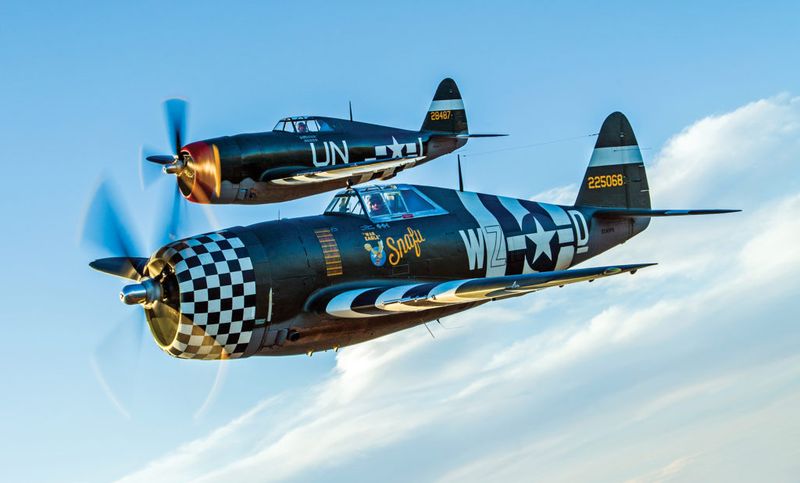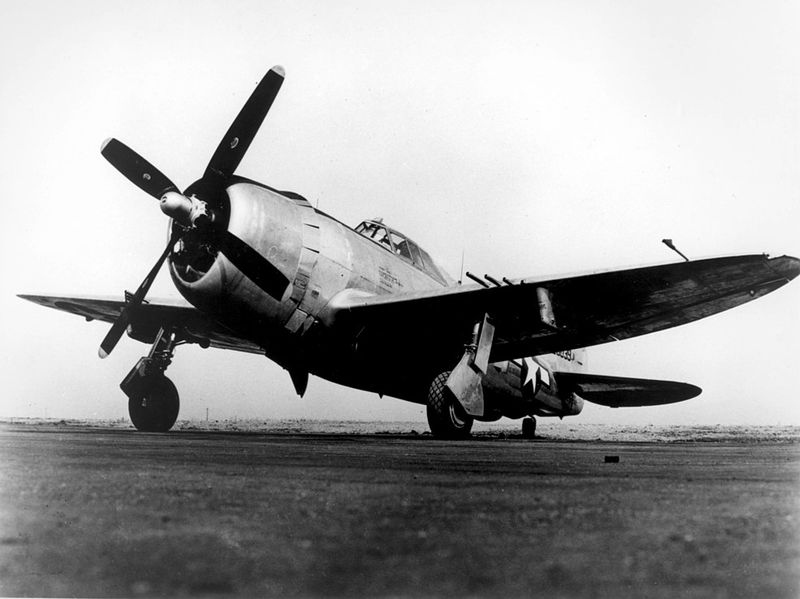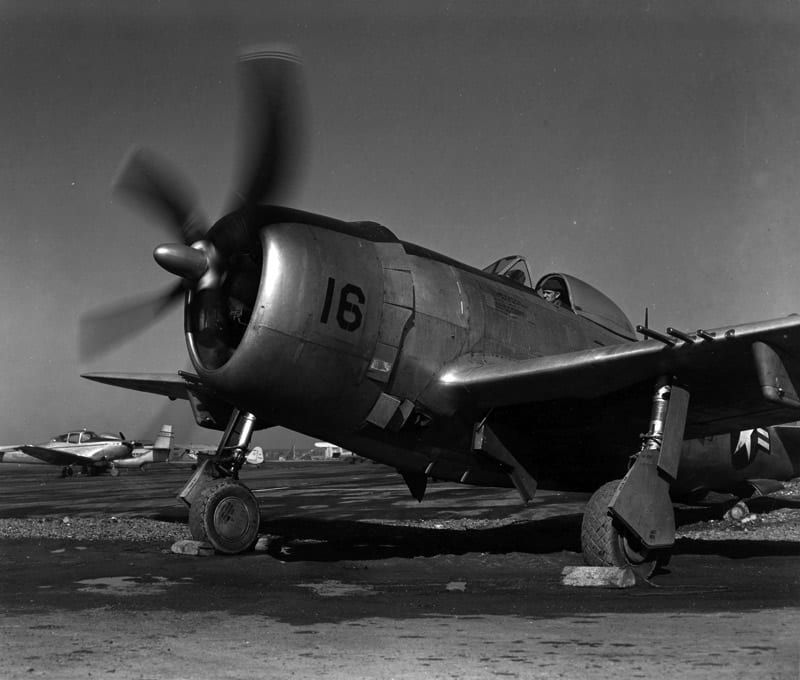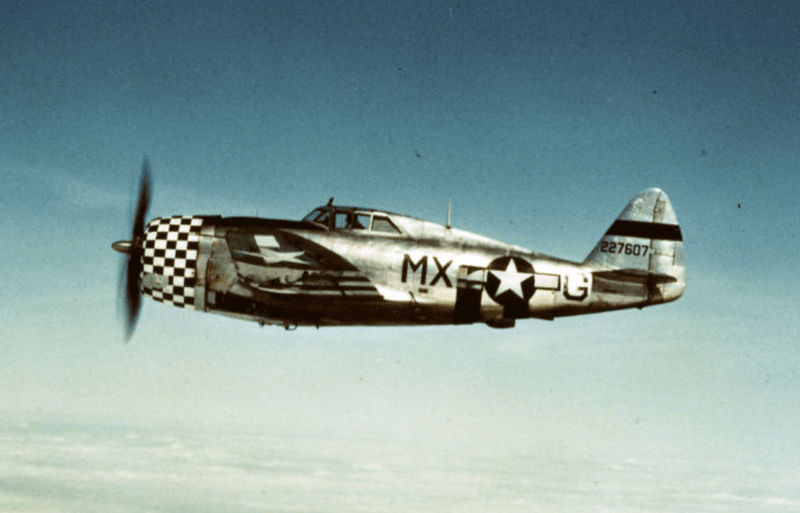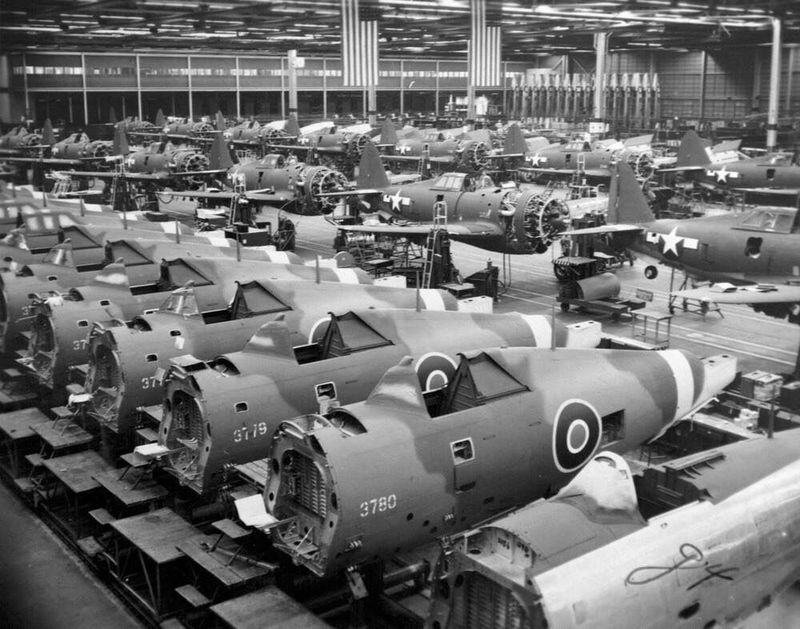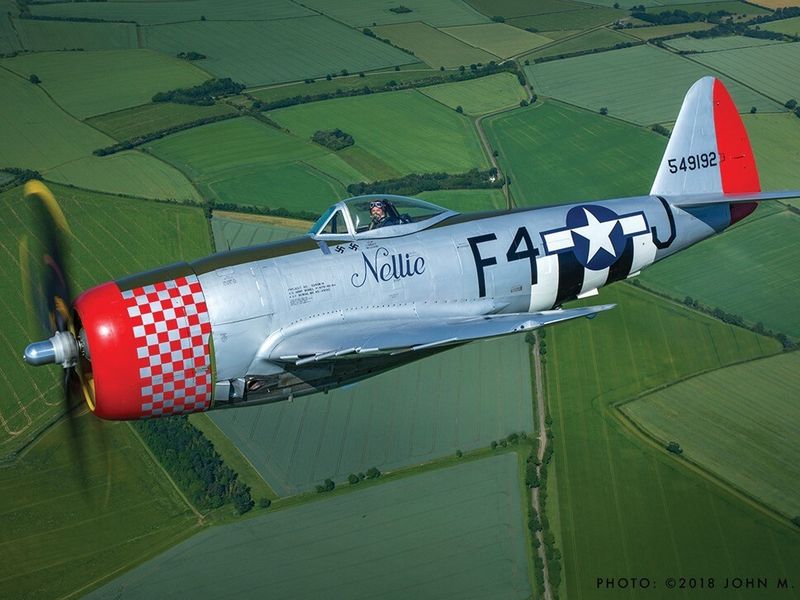The P-47 Thunderbolt stands as one of World War II’s most iconic fighter aircraft, renowned for its resilience, firepower, and versatility. With its powerful radial engine and robust airframe, the P-47 earned the nickname “Jug” and proved its worth across various combat scenarios. Here are 10 fascinating facts that underscore the Thunderbolt’s significant role in the war.
1. Powered by a Rugged Radial Engine
The P-47 Thunderbolt was powered by the mighty 2,000 hp Pratt & Whitney R-2800 Double Wasp engine. This 18-cylinder radial engine was renowned for its durability and ability to withstand extensive damage. Unlike liquid-cooled engines, the radial design allowed the Thunderbolt to take hits that would ground other aircraft. Pilots appreciated its reliability in combat scenarios.
Many pilots returned home safely despite severe damage, thanks to this rugged engine. Its performance was not only a testament to engineering excellence but also provided pilots with peace of mind during critical missions.
2. High-Altitude “Jug” Escort
Nicknamed the “Jug,” the P-47 Thunderbolt excelled as a high-altitude escort fighter. Its turbocharged engine maintained speed and maneuverability even at altitudes above 30,000 feet. This ability made it an indispensable escort for B-17s and B-24s before the P-51 Mustang took over.
The Thunderbolt’s presence in enemy airspace assured bomber crews of protection against enemy fighters. Pilots often marveled at how well it handled at such high altitudes, a critical advantage in the European theater. Its escort missions played a vital role in weakening German defenses.
3. Formidable .50-Caliber Firepower
Armed with eight Browning M2 .50 caliber machine guns, the P-47 Thunderbolt boasted formidable firepower. Four guns were mounted in each wing, allowing pilots to unleash a devastating wall of lead against enemy aircraft and ground targets.
This firepower made the Thunderbolt a feared adversary in dogfights and an effective strafing platform. Pilots valued the sheer volume of fire they could bring to bear, which often overwhelmed opponents. Whether in the sky or on the ground, the P-47’s armament proved lethal, showcasing its versatility and effectiveness in combat.
4. Dive-Bombing Mastery
The P-47 Thunderbolt was a master of dive-bombing, thanks to its heavy, stable airframe and robust landing-gear fairings. This design allowed for steep dive angles without risking airframe flutter, enabling precise targeting of fortified positions.
Pilots found the Thunderbolt’s dive-bombing capability invaluable in close support roles. Its ability to deliver bombs with accuracy and return unscathed was a testament to its superior engineering. This precision bombing added a crucial dimension to the P-47’s combat versatility, making it a favorite among ground-attack pilots.
5. Transition to Fighter-Bomber
In late 1943, the P-47 Thunderbolt underwent a transformation into a formidable fighter-bomber. Pilots began carrying two 500 lb bombs, and later configurations allowed up to a total of 2,500 lbs of ordnance, including High Velocity Aircraft Rockets.
This transition marked the Thunderbolt as a premier ground-attack “tank buster.” Its versatility in carrying bombs and rockets made it a feared weapon on the battlefield. With its new role, the P-47 expanded its combat effectiveness, proving that it could dominate both in the air and on the ground.
6. Unmatched Survivability
The P-47 Thunderbolt was legendary for its survivability. Pilots often returned home after missions with aircraft that had absorbed dozens of hits. Its durable radial engine and self-sealing fuel tanks contributed to its resilience.
The Thunderbolt’s ability to endure and keep flying made it one of the toughest single-engine fighters in WWII. Pilots trusted it to bring them back safely, even in the harshest conditions. This trust was well-placed, as the Thunderbolt consistently proved its robustness and reliability under fire.
7. Broad Combat Deployment
By 1944, the P-47 Thunderbolt was serving in every major WWII theater. From the European and Mediterranean fronts to the Pacific islands, it flew over 746,000 sorties, demonstrating its versatility.
The Thunderbolt’s widespread deployment showcased its adaptability to different combat environments. Its impressive 4.6:1 aerial kill ratio highlighted its effectiveness across diverse missions. Pilots flew the P-47 with confidence, knowing it could handle any challenge the war presented.
8. Top-Scoring Unit
The 56th Fighter Group became the top-scoring unit flying the P-47 Thunderbolt, claiming 677½ aerial victories and 311 ground kills. Notable aces like Francis “Gabby” Gabreski flew with the group, achieving 28 German aircraft kills.
The group’s success was a testament to the Thunderbolt’s capabilities and the skill of its pilots. The 56th’s dedication to the P-47 reflected its effectiveness in combat. Their achievements left a lasting legacy, underscoring the aircraft’s significance in the air war over Europe.
9. Massive Production Run
The P-47 Thunderbolt had an impressive production run, with over 15,600 units built. Ford’s Willow Run facility alone produced 8,600 of these formidable aircraft. This massive production made the Thunderbolt the most-produced American combat aircraft of WWII.
The sheer number of P-47s manufactured underscored its importance and demand during the war. Its widespread availability meant that Allied forces could rely on its capabilities in various theaters. The Thunderbolt’s production scale was a key factor in its pervasive combat presence.
10. Enduring Legacy
The P-47 Thunderbolt’s blend of speed, firepower, and toughness left a lasting legacy on post-war aircraft design. Its influence is evident in modern ground-attack and fighter designs.
The Thunderbolt’s reputation as one of WWII’s great workhorses is well-earned. Its performance during the war set standards for future aircraft development. The lessons learned from its service continue to inform military aviation, cementing the P-47’s place in history.
